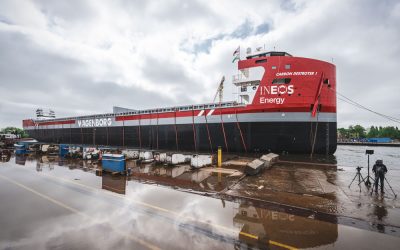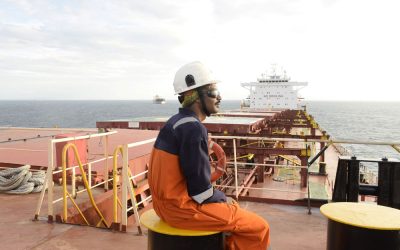The maritime industry will have to embrace a variety of different fuel transition pathways in its efforts to steer a course towards decarbonisation, according to a new report from researchers at the Technical University of Denmark (DTU).
The report, which presents analysis of the MarE-Fuel project, estimates the total owner cost for a maritime company from the use of several different green fuels. The analysis assesses the current situation (2020) as well as the situation in 2030 and 2050 on parameters such as prices, taxes, emissions and availability.
It also outlines a roadmap illustrating possible transitions from the current situation to zero emissions by 2050. The roadmap considers emissions connected with the use of different fuels, various biomass availability scenarios, and global emission ceilings for the sector. It also identifies the cheapest long-term solutions.
“Our analysis shows that there isn’t one single kind of green fuel that can solve the challenges of the maritime sector, but that a combination of several technologies is required,” says Marie Münster, Professor of Energy System Analysis at DTU Management.
Münster adds that although the analysis pinpoints which fuels and technologies will be beneficial for the maritime sector, there are several challenges that the sector cannot solve by itself due to the need for heavy investments in technology and the establishment of smart energy solutions.
According to the analysis, the cheapest solution for the industry to achieve a reduction of emissions is to initially use green fuels produced by means of sustainable biomass, first in the form of pyrolysis oil and then in the form of bio-e-methanol. However, the researchers say that in the long term there may be a shortage of sustainable biomass as other sectors will also look to exploit it.
“How big a role sustainable biomass can play in green shipping depends entirely on how much of it we have access to in the future,” says Münster. “If there is plenty available, it will certainly be one of the cheapest ways to go. However, everything indicates that low-cost sustainable biomass will be in great demand, and we must consequently also focus on optimising Power-to-X technologies, because we will need them.”
She says that all the calculated scenarios indicate that, in the long term, ammonia will be essential in making the shipping industry climate neutral, providing the power used to produce it is green. “This is because ammonia is not dependent on carbon, and the price and climate gas emissions are comparable to the other green fuels,” she explains.
“We can see that ammonia will be one of the important green fuels for the shipping industry the closer we get to 2050,” says Professor Peter Vang Hendriksen, an expert in electrolysis and energy conversion at DTU Energy.
He warns, however, that if the need for green fuel for international shipping is to be met, it will require a significant increase in the construction of plants capable of producing electrolysis. “With the current expansion rate (2019), it will, in fact, take up to 3,000 years before we have enough plants,” he says.
Significant improvements in green energy infrastructure and technology will also be required, according to Vang Hendriksen.
“Electrolysis requires power,” he says. “If, for example, we’re only going to sail on green ammonia by 2050, and we continue at the same wind power expansion rate as today for the next 29 years, we would have to use all the new capacity to produce green ammonia for shipping.
“However, having cheap green power isn’t enough, it must also be available most of the time to avoid having to over-dimension our production plants. Therefore, we must ensure flexible plants and preferably efficient storage of our wind and solar energy.”
The analysis also shows that the price of producing green fuels is about four times higher than the price of the corresponding substances produced today from fossil sources. However, scaling up production capacity, gains from mass production, and improvements in technology are expected to halve the price of green fuels by 2050.
The MarE-Fuel project was financed by the Danish Maritime Fund and Lauritzen Fonden and undertaken by DTU, Anker Invest, Maersk Line, Copenhagen Economics, OMT and DFDS.






